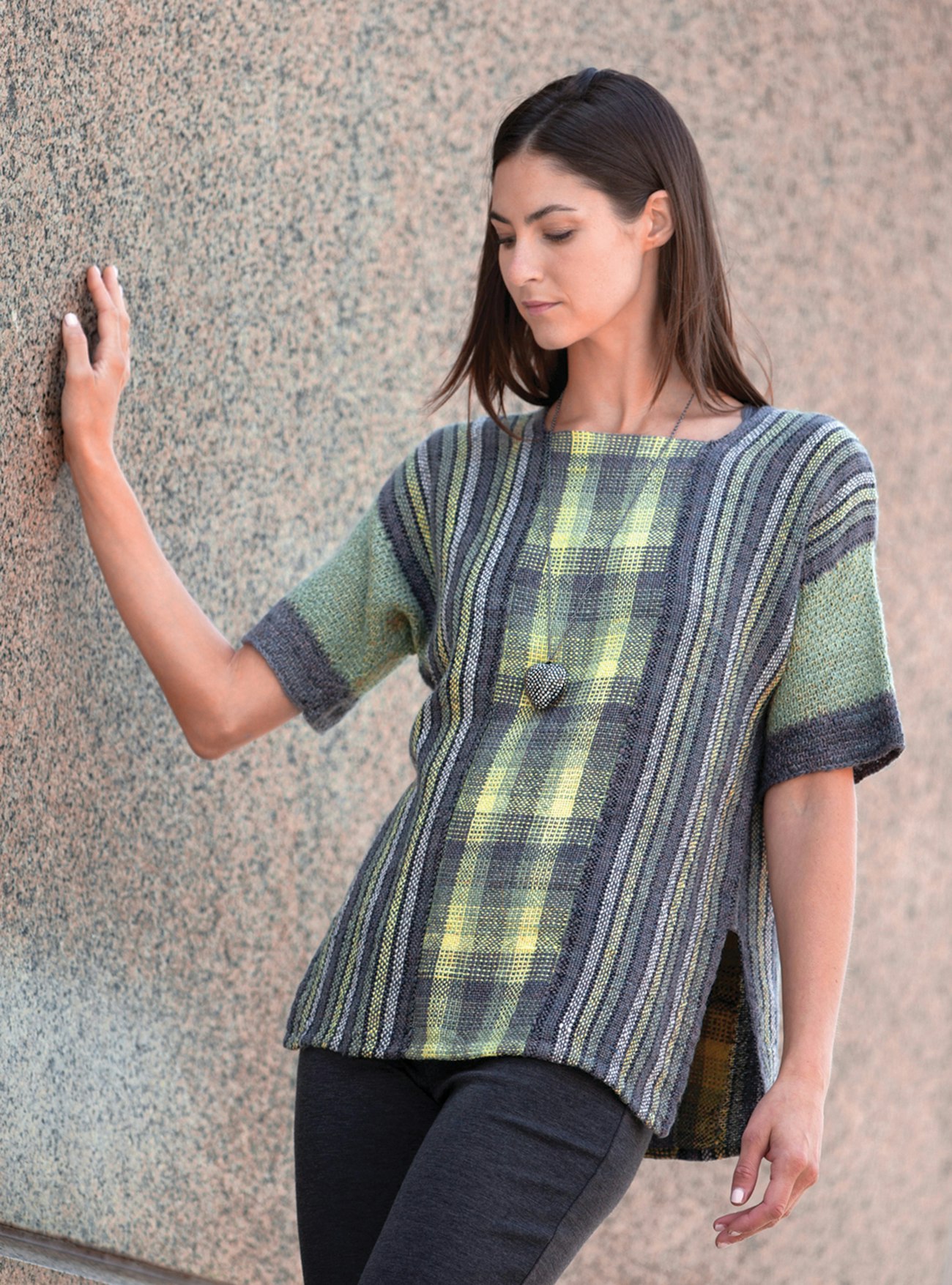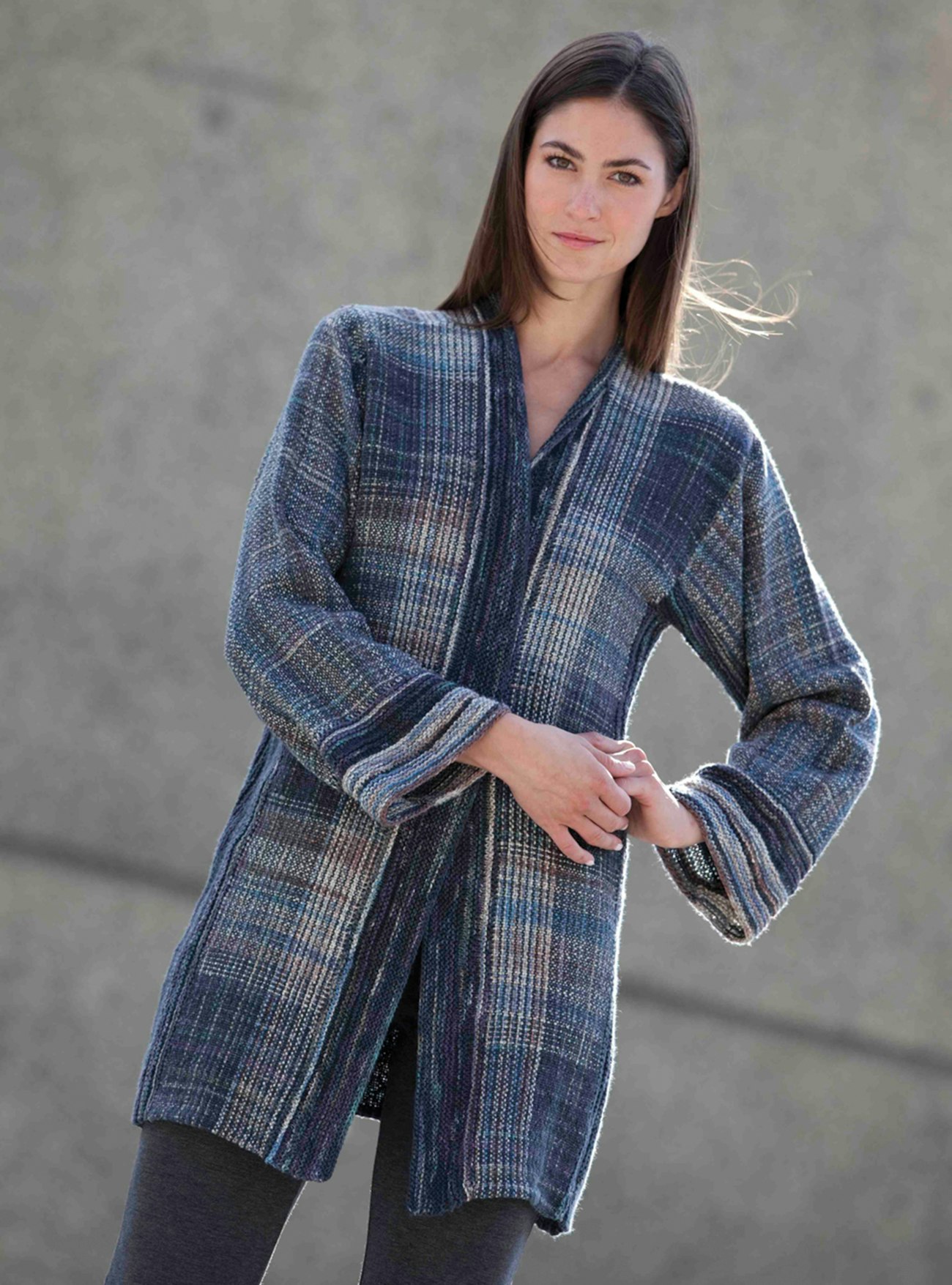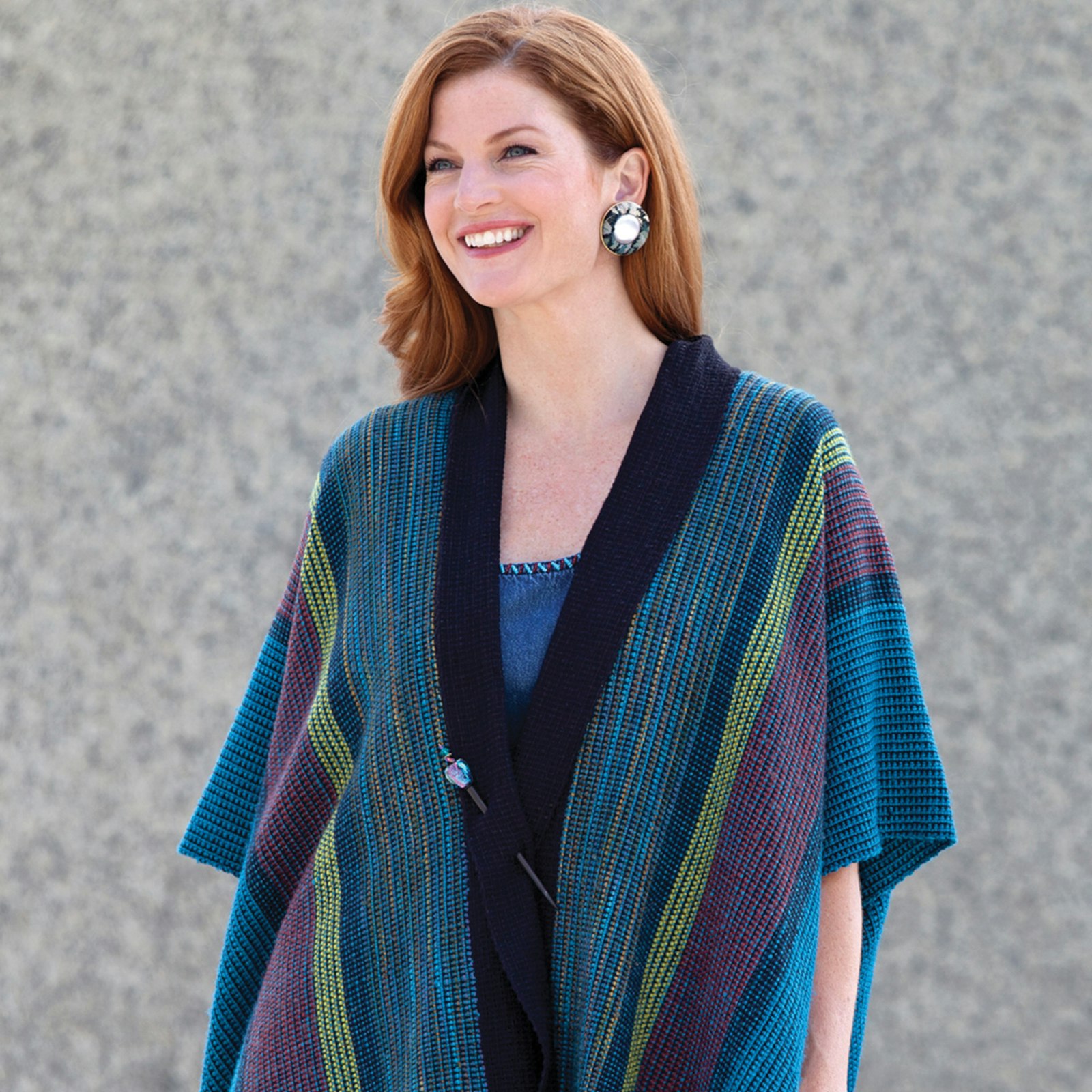Judith Shangold is one of our favorite designers. She is adept at designing garments using handwoven fabrics. In this article from Handwoven January/February 2017, she talks about how she works within the capabilities of the looms she has. - Susan
I do most of my weaving on a 20-inch-wide rigid-heddle loom. It’s the largest loom I can fit in my little house, and I have designed and woven clothing on it. When I was invited to write an article about designing garments for a small loom, my first reaction was that it was the same as designing clothing for any loom. If I had a larger, multi-shaft loom, would I be weaving different garments? The answer is “Yes and no.” A rigid-heddle loom has both benefits and limitations that do affect my clothing designs. But unless you have a loom wide enough to weave yardage and all the shafts you could ever dream of, your designs also need to take account of your loom. The beauty of limitations is that they invite you to be creative, using your imagination and perhaps some of those fancy yarns in your stash.
Tricks with Width
The first, most obvious consideration I have is the width of my loom, and that may be an issue for many table-loom and floor-loom weavers as well. My widest rigid-heddle loom is 20 inches, which, after pull-in and shrinkage, can create cloth about 17 inches wide. So I have to weave individual pieces of the garment rather than yardage. To create a garment wider than 17 inches across the back, I must weave at least two panels. The top of a sleeve needs to measure 16 to 24 inches, depending on the size of the garment, so sleeves also call for creative solutions. One possibility is to weave the sleeve sideways so that the width of the weaving becomes the length of the sleeve. At 17 inches, that’s probably too short, but you can add a separate panel to the bottom edge, which also allows for creative color, pattern, and texture changes.

Olive Garden tunic, woven in three panels.
Another solution that I explored in my book Weave • Knit • Wear (see Resources) is to add knitting to woven pieces. You can weave a 17-inch wide piece for the garment back and add a knitted panel to each edge to create the desired width.You can add knit gussets to widen a woven sleeve panel and pick up stitches along the bottom edge to lengthen it.
Playing with Yarn and Sett
The rigid heddles available today range from 2.5 to 15 dents per inch, so you have a limited range of possible setts and yarns you can use. A fine yarn that should be sett at 20 (or 24 if you like) is not going to work. For most of my clothing designs, I work with yarns designed for knitting. They tend to be thicker and softer than weaving yarns and more conducive to the kind of unstructured, unlined garments I choose to make.
However, the nice drape needed for garment fabric can be hard to achieve when working with heavier yarns, so I often alternate a thicker yarn, such as wool, with a thinner one, such as bamboo or silk.
One advantage of a rigid-heddle loom is that you typically have very little loom waste, so you get more cloth from your fancy yarns. For other looms, you could use a dummy warp to minimize loom waste, especially if you’re weaving with more expensive yarns.
Many Warps, More Design Possibilities
I want to cut and sew my woven fabric as little possible, so I aim to weave pieces that are the correct finished width. Th is means that a garment might require two or more different warps. For instance, a pullover with three front panels would require a narrow panel the width of the neck for the center and wider side panels woven on a second warp. This is an opportunity to design each warp with a different pattern.

Light and Shade Jacket, with knitted gussets, cuffs, and collar.
Warping multiple times is much less daunting with a rigid-heddle loom, especially if you use the direct warping method. With this method, instead of using a warping board, you measure the warp by tying onto the back apron bar, pulling a loop through a slot in the heddle and dropping it over a peg placed a warp’s length from the loom. I do a lot of designing during this process because I can really see how colors are playing together in the warp.
Planning the Fabric
We want garment fabrics to have good drape and also be durable and not apt to get pulls and snags. To do this, choose yarns and setts that will give you a balanced weave (one where of ends per inch = picks per inch). If you’re going to vary from that, it is better to have fewer picks per inch rather than more. A more open weave can be nice, but if your weft is packing down too tightly, the fabric won’t drape. No one wants to wear a rug!
If I owned a multishaft loom, I would probably weave more fabrics with complicated weave structures. The rigid-heddle loom produces plain weave unless you are willing to use pick-up sticks, which I am not. Instead, I have embraced the beauty of plain weave and favor fabrics that combine different colors, fibers, and textures. No matter what loom you have, plain weave, with interlacement at every crossing of warp and weft, is a good structure for garment fabrics, and its possibilities are endless. I often use color-and-weave effects in my fabric, alternating thick and thin yarns and contrasting colors in the warp. I also alternate colors in the weft, creating fabrics that look much more complicated looking than their plain-weave structure. Another of my favorite tricks is to use tapestry techniques such as hatching, but in a balanced weave.
Inspiration and Style
I design styles that I like to wear: unstructured, loose, easy-fitting. I draw inspiration from Eileen Fisher–type clothing, but I am not a seamstress and have never made a garment from a cut-and-sew pattern. I look for garment shapes that I can create with rectangles. When I need to shape a neckline or armhole, I do that on the loom to avoid too many raw edges. And I use knitting for elements such as collars, button bands, and gussets for shaping—details that would otherwise require a lot of cutting and sewing.
Weaving a garment is a way to “wear your art out.” And you can do it with the skills and the loom that you have.
—Judith
RESOURCES Shangold, Judith. Weave • Knit • Wear. Sioux Falls, South Dakota: XRX, 2014.
Also, remember that if you are an active subscriber to Handwoven magazine, you have unlimited access to previous issues, including January/February 2017. See our help center for the step-by-step process on how to access them.
Originally posted April 14, 2017; Updated May 11, 2022

